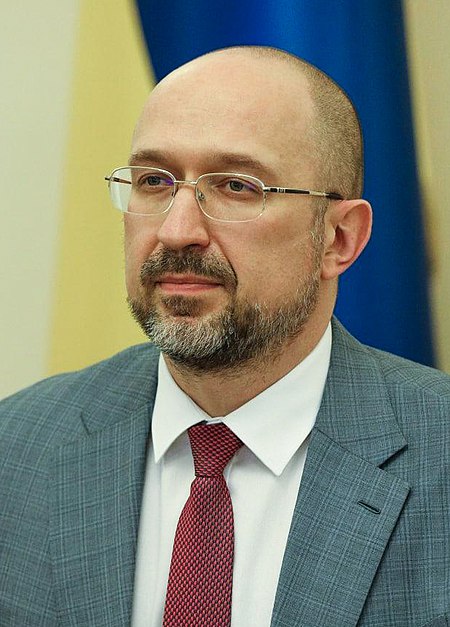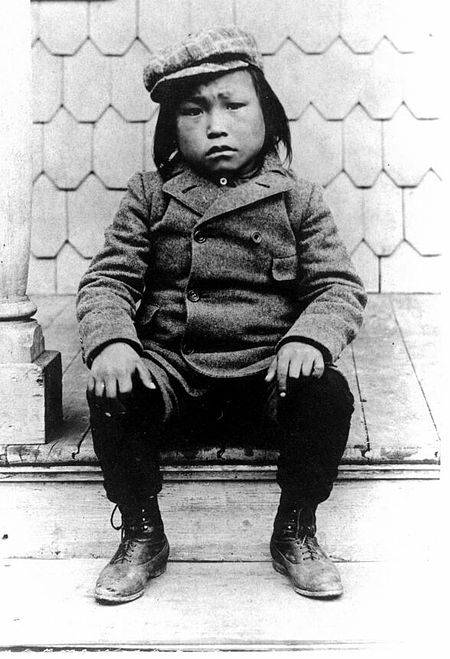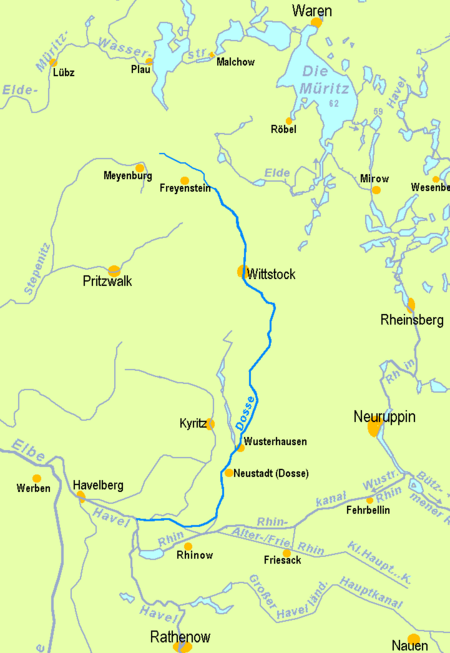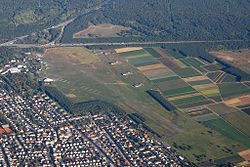Griesheim Airport
| |||||||||||||||||||||||||||||||||||||||
Read other articles:

American politician (1927–2020) For other people named James Weaver, see James Weaver (disambiguation). Jim WeaverMember of the U.S. House of Representativesfrom Oregon's 4th districtIn officeJanuary 3, 1975 – January 3, 1987Preceded byJohn DellenbackSucceeded byPeter DeFazio Personal detailsBornJames Howard Weaver(1927-08-08)August 8, 1927Brookings, South Dakota, U.S.DiedOctober 6, 2020(2020-10-06) (aged 93)Eugene, Oregon, U.S.Political partyDemocraticEducationUniversity of…

Campionato Nazionale Dante Berretti 2016-2017 Competizione Campionato nazionale Dante Berretti Sport Calcio Edizione 51ª Organizzatore Lega Italiana Calcio Professionistico Date dal 24 settembre 2016al 10 giugno 2017 Luogo Italia Partecipanti 63 Risultati Vincitore Inter (Serie A)Livorno (Lega Pro)(6º e 1º titolo) Finalista Torino (Serie A)Renate (Lega Pro) Cronologia della competizione 2015-2016 2017-2018 Manuale Il Dante Berretti 2016-2017 è stata la 51ª edizione del campion…

1940 military campaign in Namsos, Norway This article includes a list of general references, but it lacks sufficient corresponding inline citations. Please help to improve this article by introducing more precise citations. (August 2017) (Learn how and when to remove this message) Namsos campaignPart of the Norwegian Campaign of the Second World WarBritish troops pick through the ruins of Namsos after a German air raid, April 1940.DateApril and early May, 1940LocationNamsos and points to the sou…

مدارات كوبيوانوس مختلفة بالمقارنة مع مدار نبتون (الأزرق) وبلوتو (الوردي) جسم حزام كايبر الكلاسيكي ويسمى أيضا كوبيوانو (/ˌkjuːbiːˈwʌnoʊ/ QB1-o),[1] هو جرم فلكي في حزام كايبر منخفض الانحراف (KBO) يدور خارج نبتون ولا يسيطر عليها الرنين المداري مع نبتون. أجسام كوبيوانوس لديها مدارات بم�…

烏克蘭總理Прем'єр-міністр України烏克蘭國徽現任杰尼斯·什米加尔自2020年3月4日任命者烏克蘭總統任期總統任命首任維托爾德·福金设立1991年11月后继职位無网站www.kmu.gov.ua/control/en/(英文) 乌克兰 乌克兰政府与政治系列条目 宪法 政府 总统 弗拉基米尔·泽连斯基 總統辦公室 国家安全与国防事务委员会 总统代表(英语:Representatives of the President of Ukraine) 总理…

Patriark Pavle Patriark Pavle (Paul) (bahasa Serbia: Патријарх Павле, Patrijarh Pavle; 11 September 1914 – 15 November 2009) adalah patriark Gereja Orthodox Serbia,[1] pemimpin spiritual Orthodox Timur Serbia dari tahun 1990 hingga kematiannya. Ia adalah pemimpin Gereja Orthodox Timur tertua. Karena kesehatannya memburuk, ia menghabiskan sisa hidupnya di Military Medical Academy di Belgrade. Referensi ^ Serbian Orthodox Church, history Diarsipkan 2009-04-18 di Wayback…

يفتقر محتوى هذه المقالة إلى الاستشهاد بمصادر. فضلاً، ساهم في تطوير هذه المقالة من خلال إضافة مصادر موثوق بها. أي معلومات غير موثقة يمكن التشكيك بها وإزالتها. (يناير 2022) اختبار نسبة تحميل كاليفورنيا (بالإنجليزية: California bearing ratio) واختصاراً CBR هو تجربة مخبرية لقياس الضغط اللازم �…

King of Greece from 1964 to 1973 Constantine IIΚωνσταντίνος ΒʹPortrait by Allan Warren, 1987King of the HellenesReign6 March 1964 – 1 June 1973Inauguration23 March 1964PredecessorPaulSuccessorMonarchy abolished; Georgios Papadopoulos as President of GreecePrime ministers See list Georgios PapandreouGeorgios Athanasiadis-NovasIlias TsirimokosStefanos StefanopoulosIoannis ParaskevopoulosPanagiotis KanellopoulosKonstantinos KolliasGeorgios Papadopoulos Regent of GreeceTenure20 Febru…

Smartphone model One S redirects here. For the video game console, see Xbox One S. HTC One SBrandHTCManufacturerHTC CorporationSeriesHTC OneCompatible networksGSM/GPRS/EDGE850 900 1800 1900 MHzUMTS/HSPA (Z520m variant)850 900 1700 1900 2100 MHzFirst releasedMarch 30, 2012Availability by regionEU: 5 April 2012[1] US: 25 April 2012PredecessorHTC Amaze 4G, HTC SensationSuccessorHTC One MiniRelatedHTC One X, HTC One V, HTC One XLTypeSmartphoneDimensions130.9 mm (5.15 in) …

Prosopocera valida Klasifikasi ilmiah Kerajaan: Animalia Filum: Arthropoda Kelas: Insecta Ordo: Coleoptera Famili: Cerambycidae Genus: Prosopocera Spesies: Prosopocera valida Prosopocera valida adalah spesies kumbang tanduk panjang yang berasal dari famili Cerambycidae. Spesies ini juga merupakan bagian dari genus Prosopocera, ordo Coleoptera, kelas Insecta, filum Arthropoda, dan kingdom Animalia. Larva kumbang ini biasanya mengebor ke dalam kayu dan dapat menyebabkan kerusakan pada batang kayu …

Inuit child (1890-1918) Minik WallaceMinik in New York shortly after his arrival, 1897.Bornc. 1890Etah, Greenland, Thule areaDiedOctober 29, 1918 (aged 28)Pittsburg, New Hampshire, United States Minik Wallace (also called Minik or Mene) (c. 1890 – October 29, 1918) was an Inughuaq (Inuk) brought as a child in 1897 from Greenland to New York City with his father and others by the explorer Robert Peary. The six Inuit were studied by staff of the American Museum of Natural History…

Porcelain material consisting of clay and other materials Capodimonte porcelain soft-paste jar with three figures of Pulcinella from the commedia dell'arte, 1745–1750 Chelsea porcelain, England, about 1765. Soft-paste decorated in enamel colours with a gold anchor mark. V&A Museum no. 528-1902[1] Victoria and Albert Museum, London Soft-paste porcelain (sometimes simply soft paste, or artificial porcelain) is a type of ceramic material in pottery, usually accepted as a type of porce…

Eurasian intergovernmental organization Not to be confused with Commonwealth of Nations. This article needs additional citations for verification. Please help improve this article by adding citations to reliable sources. Unsourced material may be challenged and removed.Find sources: Commonwealth of Independent States – news · newspapers · books · scholar · JSTOR (May 2023) (Learn how and when to remove this message) Commonwealth ofIndependent States (in o…

Cricket Tournament Cricket tournament 2012 Indian Premier LeagueDates4 April 2012 (2012-04-04) – 27 May 2012 (2012-05-27)Administrator(s)Board of Control for Cricket in IndiaCricket formatTwenty20Tournament format(s)Double round-robin and playoffsHost(s)IndiaChampionsKolkata Knight Riders (1st title)Runners-upChennai Super KingsParticipants9Matches76Player of the seriesSunil Narine (KKR)Most runsChris Gayle (RCB) (733)Most wicketsMorne Morkel (DD) (25)Official web…

Laser using electron beam in vacuum as gain medium The free-electron laser FELIX Radboud University, Netherlands. A free-electron laser (FEL) is a fourth generation light source producing extremely brilliant and short pulses of radiation. An FEL functions much as a laser but employs relativistic electrons as a gain medium instead of using stimulated emission from atomic or molecular excitations.[1][2] In an FEL, a bunch of electrons passes through a magnetic structure called an u…

آكس أون بروفانس (بالفرنسية: Aix-en-Provence)(بالأكستانية: Ais de Provença)(بالفرنسية: Aix) آكس أون بروفانس آكس أون بروفانس خريطة الموقع تقسيم إداري البلد فرنسا[1][2] [3][4] عاصمة لـ كونتية بروفانس [لغات أخرى]آكس أون بروفانس [لغات أخرى]كان�…

River in Germany This article does not cite any sources. Please help improve this article by adding citations to reliable sources. Unsourced material may be challenged and removed.Find sources: Dosse river – news · newspapers · books · scholar · JSTOR (September 2020) (Learn how and when to remove this message) DosseLocationCountryGermanyStatesSaxony-Anhalt and BrandenburgPhysical characteristicsSource • locationBrandenburg…

17th-century English author and biographer Izaak WaltonPortrait by Jacob Huysmans, c. 1672BornIzaak Waltonc. 1593Stafford, EnglandDied15 December [NS: 25 December] 1683Winchester, EnglandNotable worksThe Compleat Angler (1653)Spouse Rachel Floud (m. 1626; died 1640)Anne Ken (m. 1641?–1662) Walton's house at '120 Chancery Lane' occupied 1627–1644 (from Old & New London, Walter Thornbury, 1872) Izaak Walton (bapt…

Anglo-Saxon saint (675-747) For the Abbot of Farfa of this name, see Guicpert. Saint Wigbert and Saint Boniface. Stained glass window by Alois Plum. Wigbert, (Wihtberht) (May 7, 675 - August 13, 747) born in Wessex around 675, was an Anglo-Saxon Benedictine monk and a missionary and disciple of Boniface who travelled with the latter in Frisia and northern and central Germany to convert the local tribes to Christianity. His feast day is August 13 in the Roman Catholic Church and the Eastern Ortho…

IDEC 3, current outright record holder at 40 days, 23 hours, 30 minutes and 30 seconds. The first around the world sailing record for circumnavigation of the world can be attributed to the surviving crew of Ferdinand Magellan's expedition, including the last captain Juan Sebastián Elcano who completed their journey in 1522. Although not in a single voyage but Magellan was technically the first to circumnavigate the globe since he was killed in the Mactan Islands and while in the Kingdom of Port…



